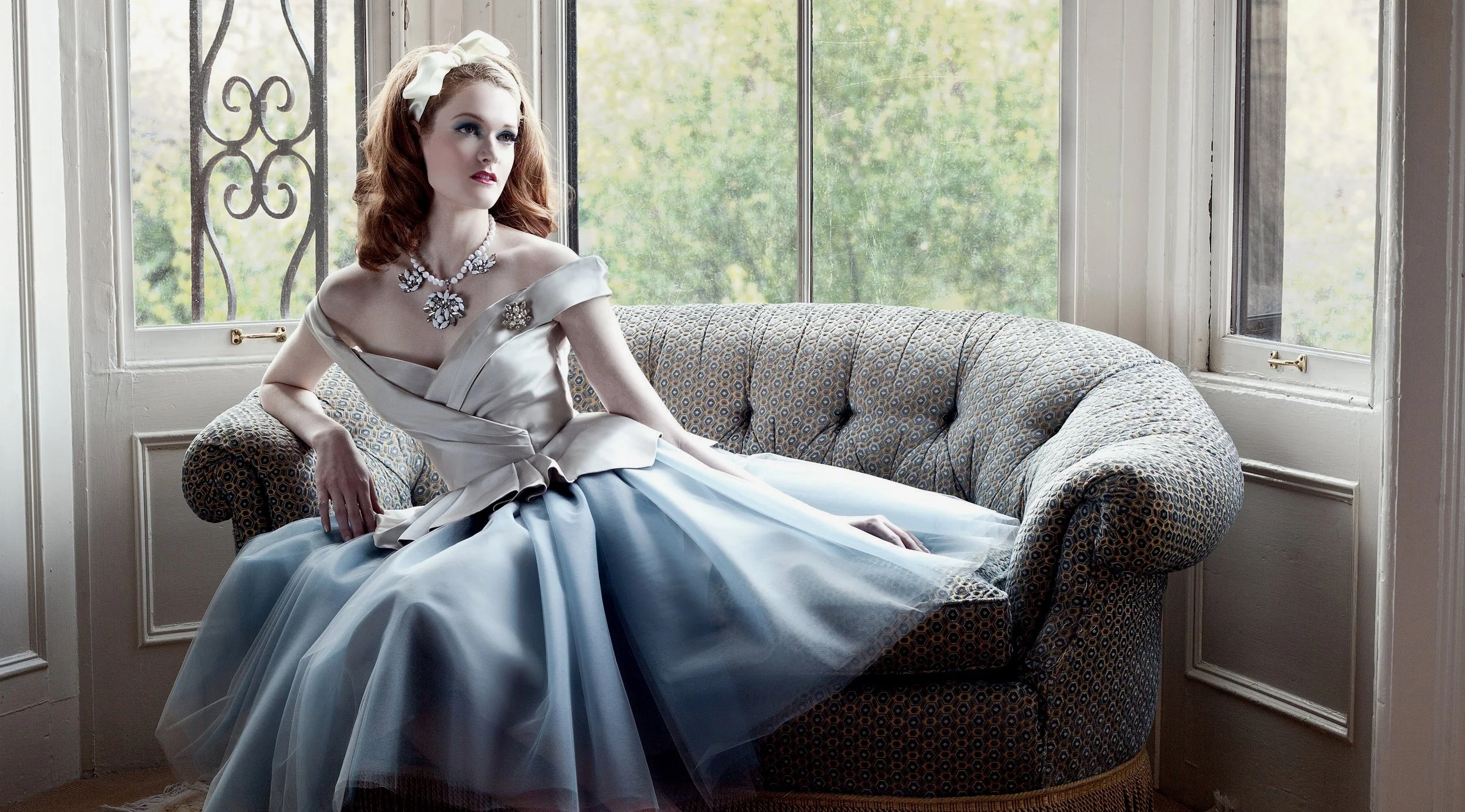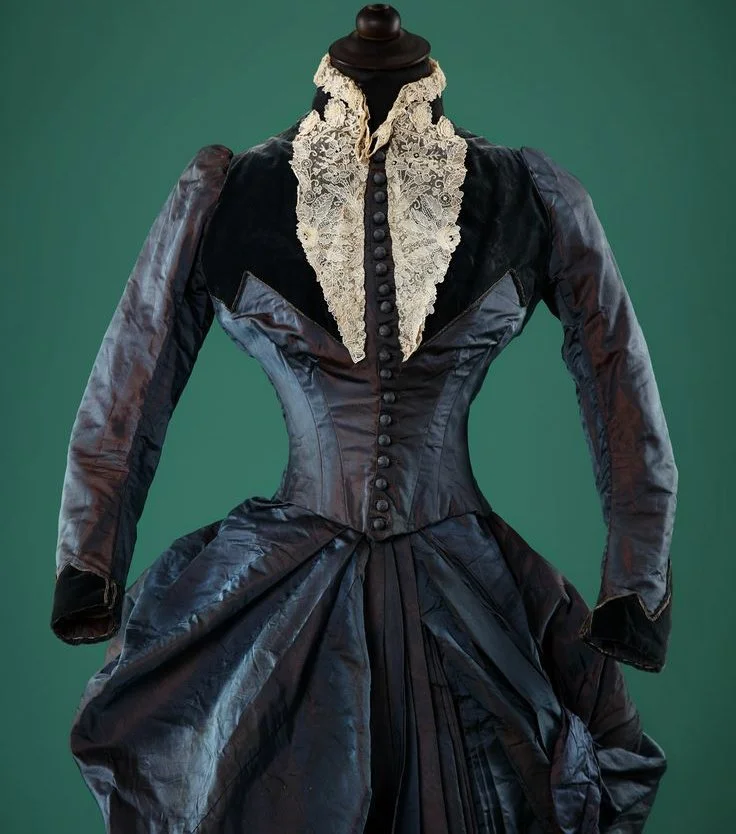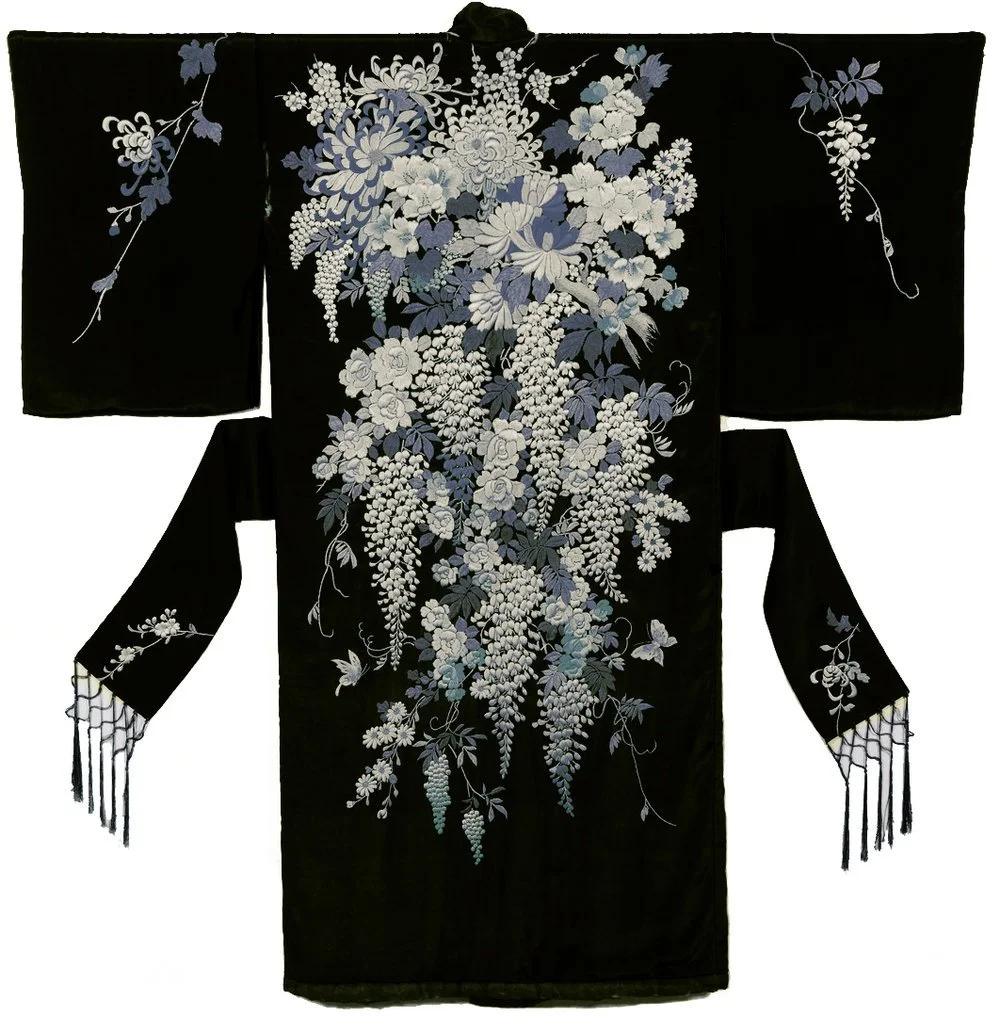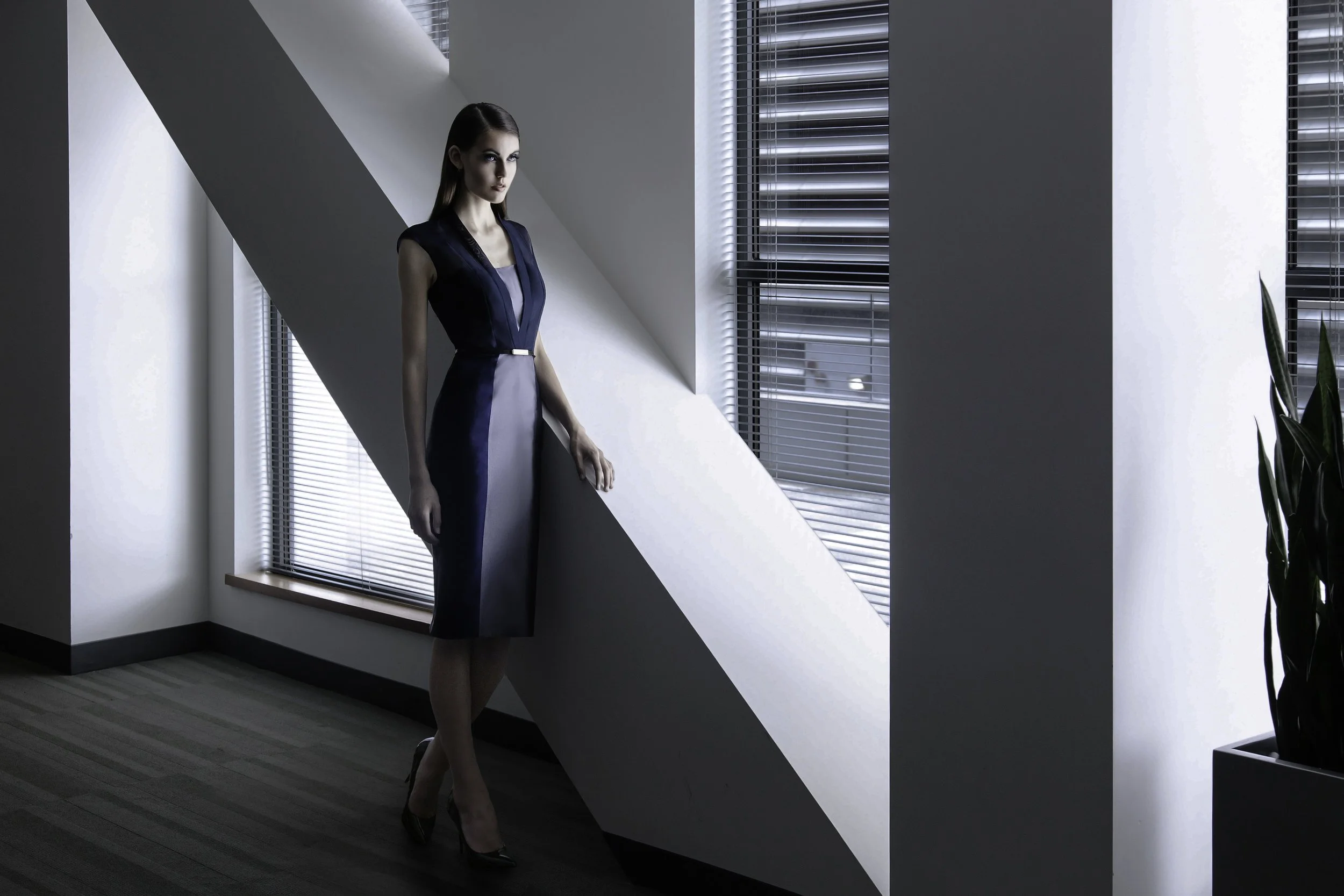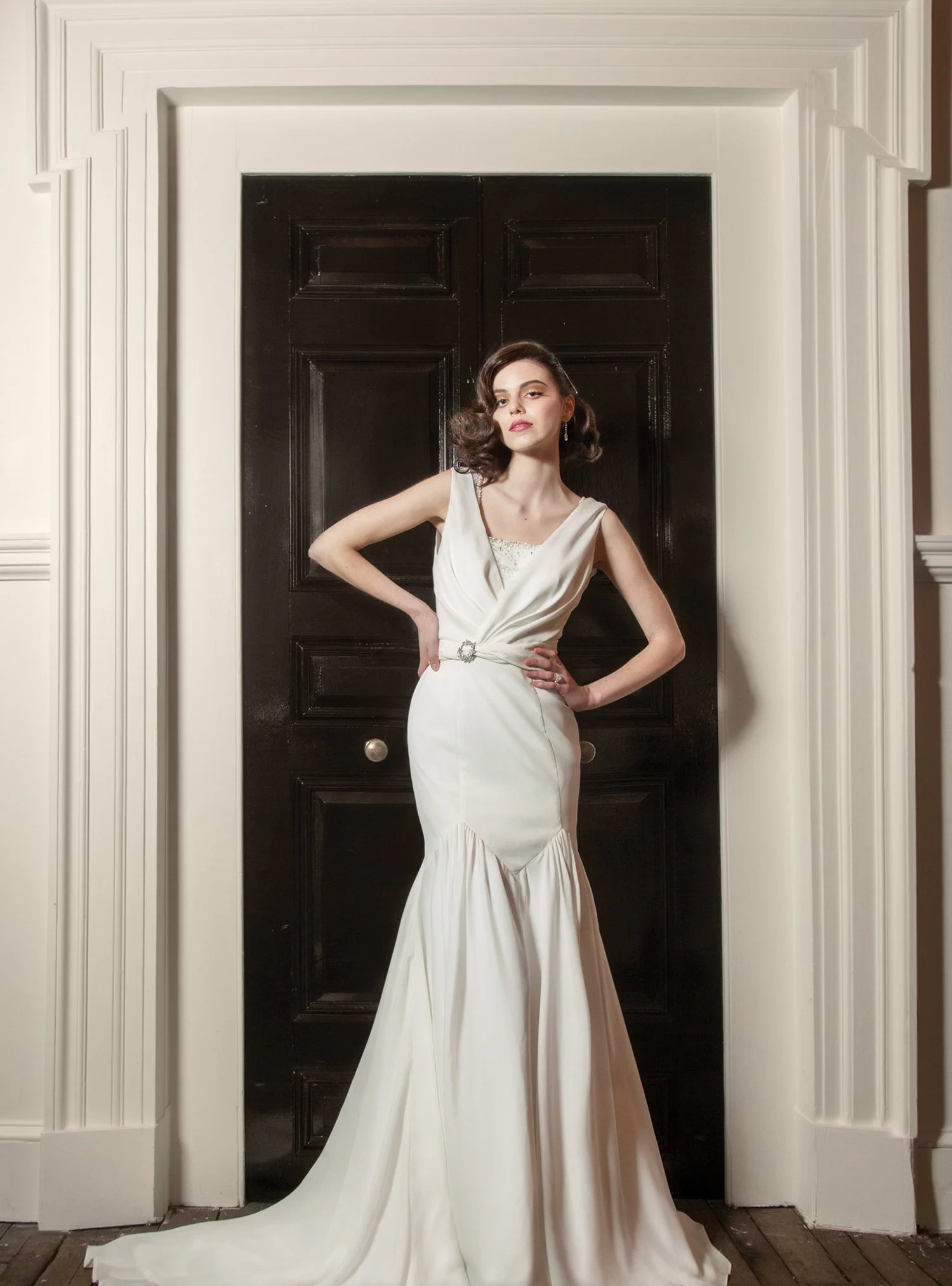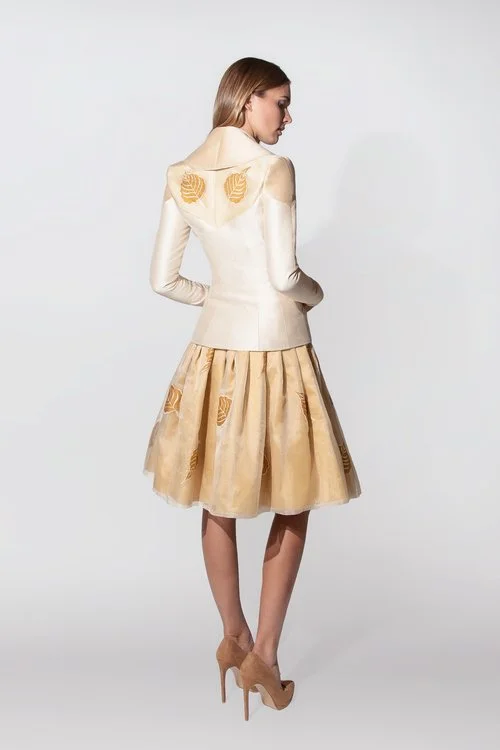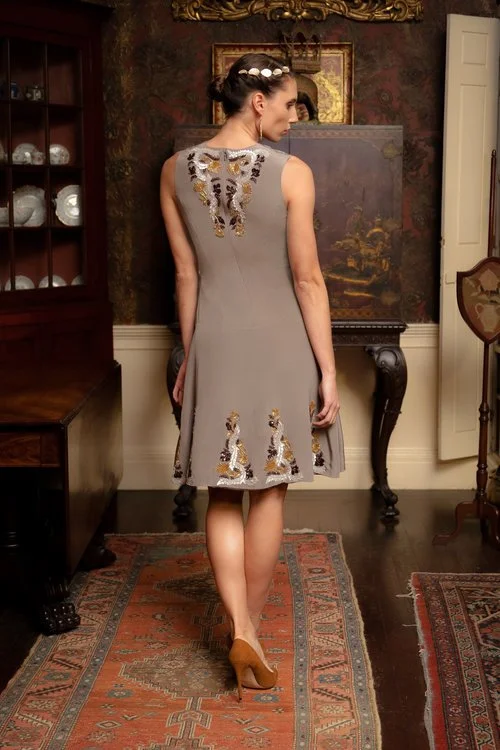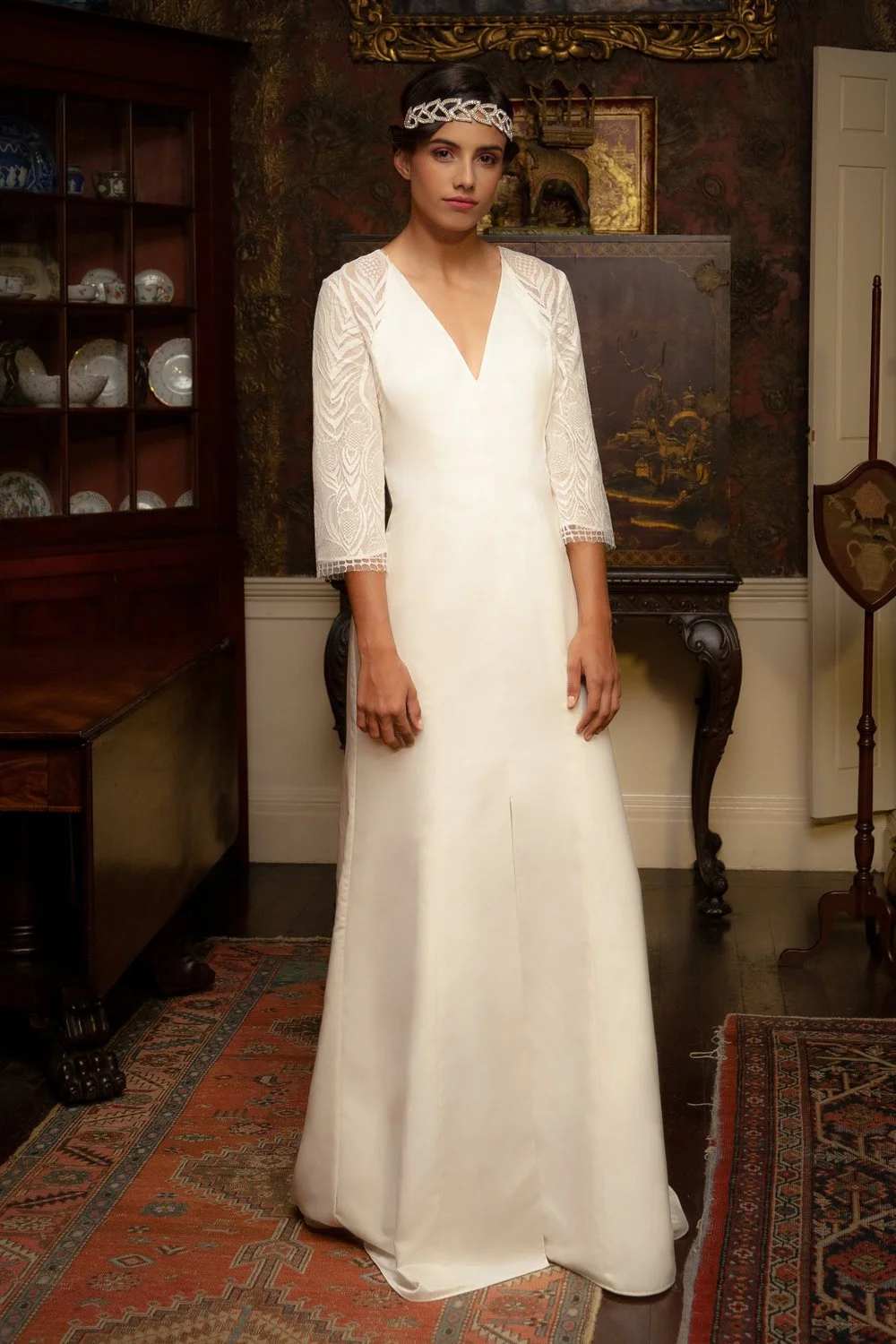Designing an Ideal
Designing an Ideal
Designer Luke Aaron combines theatre, art, and fashion in search of where the ideal meets the real.
Luke Aaron's designs reflect an appreciation for past tradition, while embracing modern reinterpretation. With a background in theatrical design, his storytelling approach to fashion creates a visual narrative through each collection in which the wearer becomes its muse. We recently spoke with Luke about the joys and challenges of his profession, and the many sources of inspiration that inform his work.
What led you into the world of fashion design?
My entry into design came through my experience working in theatre; my background is in theatrical design, and I've always been drawn to the aura of old films and stage productions. For me the art of design is about moments... creating very thoughtfully composed moments.
So when I'm designing a particular article of clothing, I visualize the process within the context of an event: a person wearing a beautiful garment, in a beautiful space, for some particular kind of special occasion or experience. And the idea is that when you put on something special, something that's been created with a particular moment in mind, then that piece becomes an expression of that moment.
Of course theatre design lends itself very well to this approach, as that’s really what it’s all about—crafting these kind of staged pictures. And so I take this sensibility into fashion, hoping to bring some of the energy of a moment into a thoughtfully designed garment, so the wearer can connect with the feeling of that moment as well.
LUKE'S COSTUME DESIGN FOR TREASURE ISLAND AT IRONDALE THEATER, NEW YORK. ACTOR: TOM HEWITT
As I said, I watched a lot of old movies when I was a kid, from the very glamorous 30's through the 60’s, or films made in those times that were meant to depict older periods. I always love to see how different eras —like the 1960’s for example— interpret earlier styles.
I find this very interesting because it's a kind of romanticized version of history; where a period isn’t exactly recreated, but is seen through the imagination and sensibility of another time. A lot of purists may say ‘well, that’s not historically accurate...’ but to me, it's fun to see the different ways in which people blend the two different worlds together.
MOVIE STILLS FROM DR. ZHIVAGO, 1965
So the historical aspects interest me. The theatre program at Yale is very historically driven, and when I was in school I worked on shows across many different time periods, and spent a lot of time researching their respective styles.
When doing this research, one finds examples of clothing depicted in different ways. In later periods, photography allows us to see images of real people in actual garments, but I always preferred looking at the fashion illustrations of the particular time instead.
This is because the illustrations are depicting the idealized forms of the era, so you really get a sense of what the designers were trying to create, even if it didn’t look that way on real people. This way you can understand what the basic principles of each period were—whether it was about emphasizing the ‘s’ curve of the body, or making people look very straight up and down, or showing an hourglass figure... it’s all very exaggerated and idealized in illustration, so that’s something I always like to look at, because you can get to the essence of a particular time period or style.
VICTORIAN AND 1920'S FASHION ILLUSTRATIONS
Also fine art is another source of inspiration—looking at paintings by artists such as John Singer Sargent, who are famous for depicting fabric. These were not necessarily realistic portrayals of the material, but were in a way also showing people it’s essence, such as through a woman wearing a gown, and how the character and qualities of that gown related to their personality.
In the 18th century, the detailed depiction of fabric was actually one of the ways that you showed how skilled you were as a painter; how you could render things like taffeta crumpling, or light on fabric, and again all of this was shown through another artists eyes, as a kind of idealized fantasy version of it, which is a big part of fashion—even though it's about something wearable, there’s also this very romantic, heightened sense of experience that accompanies it.
JOHN SINGER SARGENT.—CASHMERE, 1908 & REPOSE, 1911
Speaking of materials, I prefer not to work with artificial textures or colors, as I’m more inspired by fibers and colors that occur in the natural world. This probably leaves me in the dust in the eyes of many people nowadays, especially those involved in creating synthetic fibers and tech-infused materials.
But I think even if it’s not a natural material, it will always be about how close you can get it to feel like a natural material. Because it’s touching your skin, which is of course an organic material, and so what people really want close to them are things that feel the same way. I think that’s always going to remain, and to me is kind of the epitome of luxury, especially as natural materials become harder and harder to come by.
Cultural connections are also something I find very interesting—how seemingly disparate elements across cultures can be joined together through mixing styles from different regions and countries. Of course if it's done superficially, the result can be very watered down; but it can also create something very interesting, because different groups have very different aesthetic sensibilities, and this can especially be seen in their clothing.
For example much of Western clothing is all about intricate patterns; such as in the victorian era or the 1950's, where everything's very constructed, with lots of seams and style lines, and you create a shape out of these very intricate pattern pieces, like a puzzle.
But if you look to the East, it’s all about large squares of fabric cut into very simple shapes, made with elaborate textiles that are then manipulated into a form by either folding, tying or draping them. So you don’t actually cut into the fabric that much, it’s all in how it’s draped or tied.
I love to combine these two ideas into a single garment... having this very constructed part, and also a part that's essentially a big square, which then becomes something more by perhaps putting a belt on it.
Speaking of different regions and cultures, what's it been like living and working as a fashion designer in Boston?
Well, when I was about to create my brand I was living in New York, but my business partner was based in Boston, and due to logistical reasons that meant the brand was going to be based here in Boston. That led me to want to create something that embraced Boston, that was distinctly informed by Boston, and made sense as to why it was here rather than somewhere like New York, or LA, etc.
So I approached something that someone in the fashion industry might look at as an impediment —because you don’t normally think of Boston as being particularly fashion forward— and began to look for things about Boston’s style that I could incorporate into my aesthetic.
Firstly, I knew there was this strong historical aspect to the city, because Boston is very rich in early American history. There's also a kind of slightly old fashioned but very dignified sensibility, a bookish focus on academics and knowledge, and an emphasis on nature that's very strong as well, such as when you think of Emerson, Thoreau and the Transcendentalists.
I found all of this lined up with the inspiration of my being in the arts, and seeing Boston as somewhere that's more cultured, more focused on learning and reflecting.
So I began to take all of these qualities and incorporate them into the context of a fashion brand. And through this process, suddenly all of these elements appeared a little more modern, and a bit sexier too, because fashion always has that aura about it.
So this research gave you the resources to form a brand that mirrored the time and place you're working in...
Yes, and as a matter of fact I didn't grow up on the East coast, I grew up in the Northwest, where the oldest ‘Western’ history was something like the gold rush. There weren't any very old buildings, or families settled there you could trace all the way back to England... so when I was younger and thought about the East coast, I developed this romantic view of what Boston was through the idea of all that, because that’s what is was to me—it was about old houses, and these ties to England and early America. It was almost like a film version of Boston.
Then when I actually came here, and realized that it was in fact all about sports and all these other very different things, I found I still wanted to keep my romanticized version of Boston alive; like when I'm walking around these beautiful old neighborhoods, I can imagine these salons, parties that people would have had in all the old houses…
So I think for me, being a little bit outside of that actual world allows me a certain freedom to look at it more creatively, drawing from what I imagine to be the best, or most pleasing aspects of it. Because in all reality, with a lot of people living on Beacon Hill, the old families and so forth, everyone wears the same LL Bean sweater... it’s not really that romantic!
I think what's often kept culture fresh and alive throughout the ages are people who come in from the outside offering new perspectives, or have somehow created different ways of being in the world in spite of the restrictions of their surroundings..
And to me fashion is the perfect creative medium for this, because in and of itself it's not that serious or precious —there's nothing very reverent about it— so it's the perfect thing to be playful and experimental with, because you don’t have to take everything too seriously.
Do you feel most other designers today are still following trends coming from places like New York or Milan, or do you see more people choosing to perhaps create or follow their own paths?
Well I think now that everything is so global and available everywhere, people are beginning to want more individualism and authenticity. I mean historically certain regions may be associated with specific things, like how in the past when you thought of New York you would associate it with things that are modern and new ..and maybe see it as being a bit sexier or cooler than other places.. that’s what you would think of.
Then Milan feels more artisanal, and about traditional craftsmanship. I mean I don’t know what any of these things really stand for, but to me because of the process of globalization, the emphasis now seems to be on developing your own personal narrative and aesthetic, and really sticking to it.
Of course there are still brands that simply want to sell a product, and research what’s cool and trendy, and try to create something based on all of that —and that’s one thing— but if you’re a designer, I think the best thing you can do is stick to your own vision, and not be distracted by what may or may not be cool, because people can tell if you’re trying too hard to be something you're not.
So developing a base of knowledge to draw from, and finding inspiration outside of fashion to inform your choices, that’s what I believe helps make something feel different and special. Yet often when I talk to kids in fashion school, I notice the first thing they do when they have a project is go and look at fashion shows for ideas. I think this is really the worst thing you can do, because although you might end up having certain similar sensibilities to other designers, you don’t want to copy them intentionally, without first learning more about who you are.
I believe one's true creative identity is something that starts to form before you even think about going into fashion, or any other discipline; it’s something you begin to discover when you’re attracted to certain things, like old movies, or reading, or hearing certain music, or being in nature... then slowly you develop this way of looking at the world.
And then once you discover what your vision is, there’s also another added component, which is that people will have to want to buy your work. So if you're doing shows or look books, you might create a certain amount of clothing that simply serves to create a world, that represents your personal vision; you’re not worried about anyone buying it or really being able to reproduce it, you’re just going to tell a story with these dresses.
Then you have to have certain pieces you know will actually be wearable that you can reproduce. It's very important to find a balance between these two, because you don’t always want to get bogged down by having to think 'oh, but can someone really wear this...' But you also can't let that go out the window entirely, because the end game is always to have an element of that desirability.
That’s what I find challenging and exciting about this work. Unlike theatre, after a fashion show you can't just have people say 'oh that’s great, that was an experience and that’s beautiful..' You need them to say all those things and also 'yes, now I’m ready to pay however much money to have it.' Which is really challenging.
Throughout this process you can create all of these rules about how your work has to be approached in certain ways, that you're more serious or less serious because you're going in one direction or the other... but I've found this way of thinking is very limiting, and in fact unnecessary.
If you want to design a theatre production one day and a fashion collection the next, if you want to listen to pop music and then go to an opera, I think it’s good to be open to the positive elements of all sorts of different disciplines, and recognize the good in so many things, and not be snooty and limit yourself.
I find it frustrating when people say 'well this is good and this is bad.. whoever likes this has no taste..' I think you obviously have your own sensibilities, but there are so many gray areas, and I think it’s easy to pooh-pooh or dismiss something when you're safe and secure in your own position, but it's much more interesting, and perhaps more challenging, to recognize and incorporate the positive qualities found through a wide range of experiences.
And when we let go of our preconceptions in this way, we just might even experience a moment when the real and the ideal, everyday life and 'movie life' meet.. it seems like fashion can actually play an interesting role in encouraging that.
I suppose that’s really the role of art in general, to find a way to bring this other realm into the everyday, because you know, the ‘real world’ can be a pretty difficult place to have to live in all the time! (laughs) ...and so by bringing a little bit of that magic into our experience, it helps create a greater sense of meaning in our lives.
— For more information on Luke Aaron's collections and latest work, visit www.lukeaaron.co —


